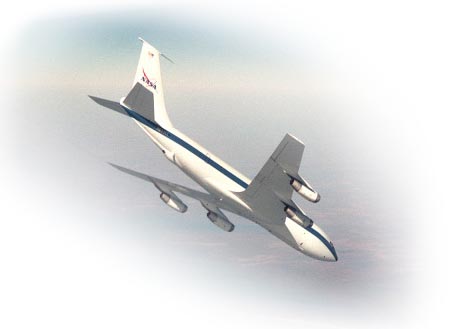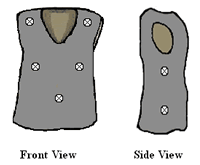|
How NASA creates zero gravity on earth Tell a Friend |
|
Team Purdue collaborates with NASA to study sense of touch in zero gravityWe study a $300,000,000 problem: Spatial DisorientationSpatial disorientation mishaps cost the Department of Defense $300 million annually in lost aircraft, dozens of lives and can give astronauts debilitating motion sickness. It is a false perception of one's attitude or orientation. Team Purdue's research hopes to investigate the use of "buzzing tactors" (like what you feel in a massage chair) to convey orientation to disorientated individuals. Excitement of science in youth is our aimOur team will share our research and flight experiences with the general public and students of varying age levels. We will be visiting and presenting at local schools, museums, and participating in West Lafayette, IN events. Involvement in these various programs will inspire people of all ages, to become involved with the field of science and the space program. Along with educating the community, we hope to further our knowledge by positive interaction with a diverse group of people. If you support what we are doing, please join our free newsletter: You will never get spam from us, and we never rent, sell or share this mailing list. Our tools are a vest with tactors and an airplane that creates zero gravity
This research is three years in the makingThis year culminates three years of experiments investigating haptic (touch) perception in altered-gravity environments. Data collected during two previous flights under the NASA Reduced Gravity Student Flight Opportunities Program showed that (1) identifying touch location deteriorated in zero-gravity environment; and (2) this deterioration was not due to a change in hardware performance, or a change in perceived intensity of haptic signals in zero-g. Our focus is on cognitive load (mental distractions)The current project investigates the role of mental distractions (cognitive load) in affecting haptic performance in a zero-gravity environment. Cognitive load is tested by strapping down one of the students during the weightless part of the flight to reduce that students' distractions. The other will float. Performance will be assessed by comparing accuracy in identifying a haptic stimulus on the torso by the flying and the immobilized member, and by comparing information transmission through the multi-tactor vests worn by these two flight members. The benefactors of haptics research include: Astronauts, Soldiers, Disabled and the ElderlyResults will be of interest throughout the aerospace community. Properly designed tactile displays could give astronauts additional orientation awareness during EVAs (Extra-Vehicular Activities) and discrete communication to covert ops soldiers would be made easy. This haptic technology could be used for navigational information to disabled, elderly or the blind when combined with a Global Positioning System (GPS) and a wearable computer. Team Purdue, Anu Bhargava With thanks to our generous sponsors below for their support. Electrical and Computer Engineering, Purdue University Aerospace Engineering, Purdue University Industrial Engineering, Purdue University Did you join our free newsletter? Please do above. |

 We wear a vest with ten tactors (they are like the vibrators in a massage chair) equally distributed over the torso. The vest is a tight fitting wetsuit jacket. In our flight we alternate between weightlessness (zero g) and twice the earth's normal gravity (two g).
We wear a vest with ten tactors (they are like the vibrators in a massage chair) equally distributed over the torso. The vest is a tight fitting wetsuit jacket. In our flight we alternate between weightlessness (zero g) and twice the earth's normal gravity (two g). 